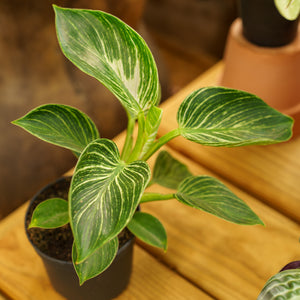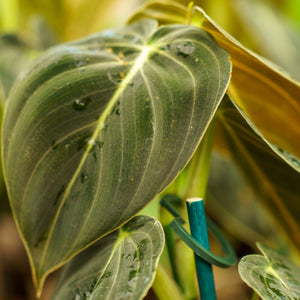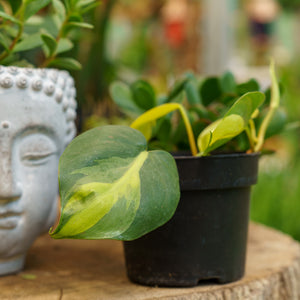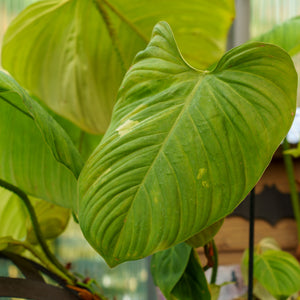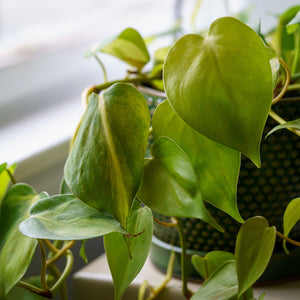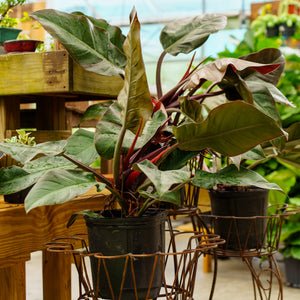The Philodendron Guide
Philodendrons are a diverse group of tropical plants celebrated for their lush foliage, adaptability, and ease of care, making them a staple in houseplant collections. With dozens of species and hybrids available—from trailing vines to bold, self-heading varieties—philodendrons offer striking form and color for any indoor space. Their bold textures and impressive variety make them ideal for styling shelves, floor planters, or hanging baskets.
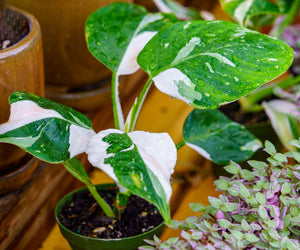
About
Native to the tropical rainforests of Central and South America, philodendrons are members of the Araceae family and are primarily grown as indoor foliage plants. They fall into two main categories: vining and self-heading (non-climbing) types.
- Vining Types: Species like Philodendron hederaceum, 'Brasil', 'Lemon Lime', and Philodendron micans form long, cascading stems and are ideal for hanging baskets or trained on trellises. Philodendron adansonii, known for its Swiss cheese-like foliage, adds whimsical texture to plant displays.
- Self-Heading Types: Compact or upright forms such as Philodendron 'Birkin', 'McColley’s Finale', 'Moonlight', and 'White Princess' grow in rosettes or tight columns. Larger specimens like Philodendron selloum and Philodendron 'Rojo Congo' make bold floor plants.
- Collectors' Favorites: Rare and high-interest cultivars include Philodendron gloriosum, melanochrysum, billietiae, Paraiso Verde, and the highly sought-after Pink Princess and White Wizard for their variegated patterns and unusual leaf shapes.
With their wide range of appearances and tolerances for varying conditions, philodendrons have become cornerstones of indoor plant styling.
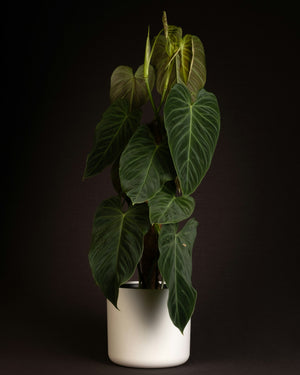
PLANTING
Philodendrons are low-maintenance and thrive when given proper potting and lighting conditions:
- USDA Hardiness Zones: Best grown as houseplants; hardy outdoors in Zones 10–11.
- Soil: Use a chunky, well-draining mix containing potting soil, orchid bark, and perlite or coco coir. Avoid compacted or soggy soils.
- Light: Bright, indirect light is ideal. Variegated types like 'Birkin' or 'White Princess' require more light to maintain their patterns. Avoid harsh direct sun.
- Containers: Use pots with drainage holes to prevent root rot. Repot every 1–2 years as roots outgrow the container.
- Planting Time: Philodendrons can be planted or repotted at any time indoors, though spring and summer encourage faster adjustment and growth.
Trailing types like 'Fuzzy Petiole' or 'Minima' benefit from moss poles or supports to mimic their natural climbing habit.
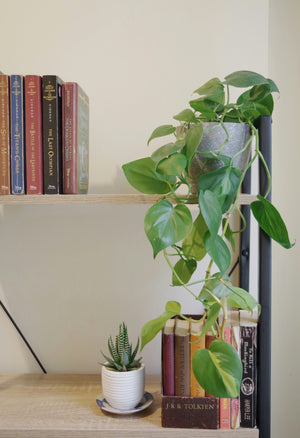
CARE
With consistent moisture, warmth, and humidity, philodendrons will thrive and reward you with lush foliage:
- Watering: Allow the top inch or two of soil to dry between waterings. Overwatering is a common issue—use your finger or a moisture meter to check the soil.
- Humidity: Most philodendrons appreciate moderate to high humidity. Grouping plants or using a humidifier can help in dry environments.
- Fertilizing: Feed monthly in spring and summer with a balanced, diluted liquid fertilizer. Cut back feeding in fall and winter.
- Pruning: Trim back long vines or leggy stems to shape and encourage bushier growth. Remove yellowing or damaged leaves as needed.
- Support: Provide a moss pole, stake, or trellis for vining types to climb, encouraging larger leaf development and healthier growth.
Leaf yellowing may signal overwatering, poor drainage, or too little light. Adjust care to maintain vibrant foliage.
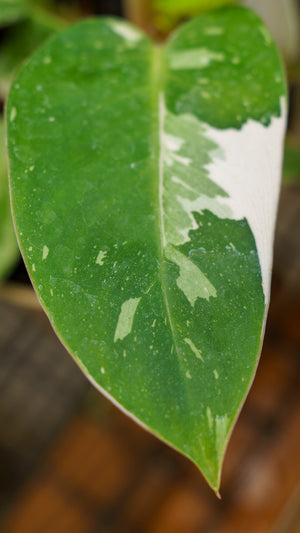
HOW TO USE
Philodendrons bring bold structure and calming green tones to interiors and are highly adaptable across design styles:
- Trailing Types for Shelves & Hanging Baskets: Use 'Brasil' or 'Lemon Lime' to spill over the sides of planters or macramé hangers.
- Statement Floor Plants: Large varieties like 'Rojo Congo', 'Selloum', or 'Imperial Red' anchor living rooms, lobbies, or hallways.
- Tabletop Features: Compact forms such as 'Birkin', 'Moonlight', and 'McColley’s Finale' add brightness to desks and side tables.
- Collectors’ Displays: Showcase rare types like gloriosum, Paraiso Verde, Pink Princess, or melanochrysum in well-lit corners for maximum visual impact.
They pair beautifully with calatheas, pothos, alocasias, or ferns for layered indoor jungle arrangements.
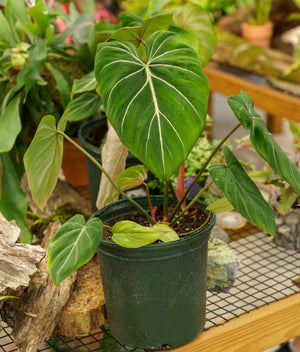
COMMON QUESTIONS
- Are philodendron toxic to cats? Yes, philodendrons are toxic to cats and can cause oral irritation, drooling, or vomiting if ingested.
- Are philodendron toxic to dogs? Yes, they are also toxic to dogs, causing similar symptoms.
- How to propagate philodendron? Most philodendrons propagate easily from stem cuttings. Root cuttings in water or moist potting mix.
- How to care for philodendron? Provide bright, indirect light, well-draining soil, moderate humidity, and allow soil to dry slightly between waterings.
- How often to water philodendron? Typically every 7–10 days, depending on environmental conditions. Always check the soil before watering.
- Why is my philodendron turning yellow? Yellowing can result from overwatering, low light, or poor drainage. Adjust care as needed.
- Is a monstera a philodendron? No, while related, monstera is a separate genus within the same family (Araceae). It is not a true philodendron.
Conclusion
Philodendrons offer unmatched versatility and elegance for the indoor plant enthusiast. Whether trailing from shelves, making a statement on the floor, or showing off rare variegated foliage, these tropical beauties bring texture and life to every room. Their forgiving nature and broad variety make them essential for anyone looking to cultivate a lush, indoor oasis.
The Philodendron Collection
Sold Out
Sold Out

